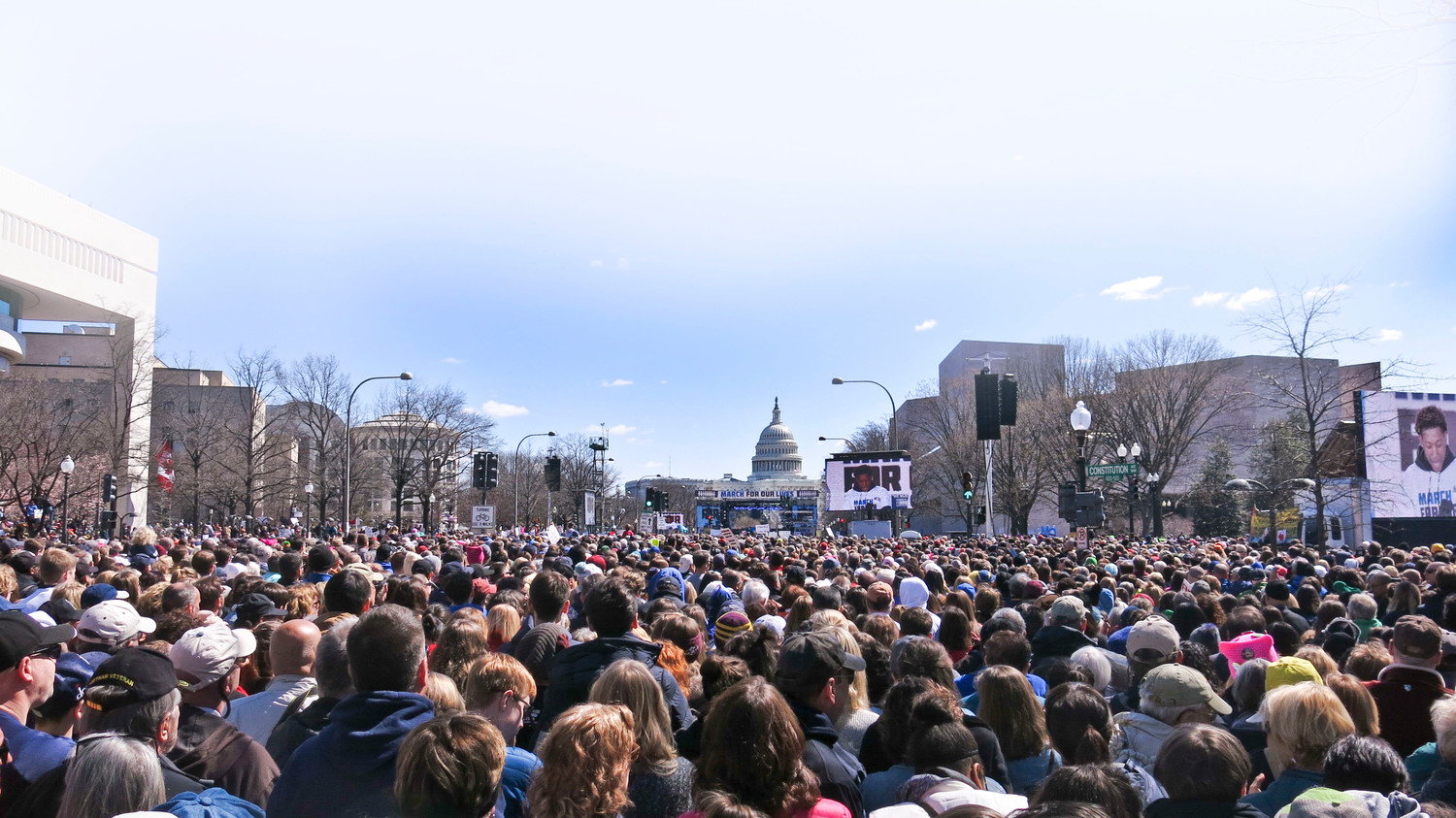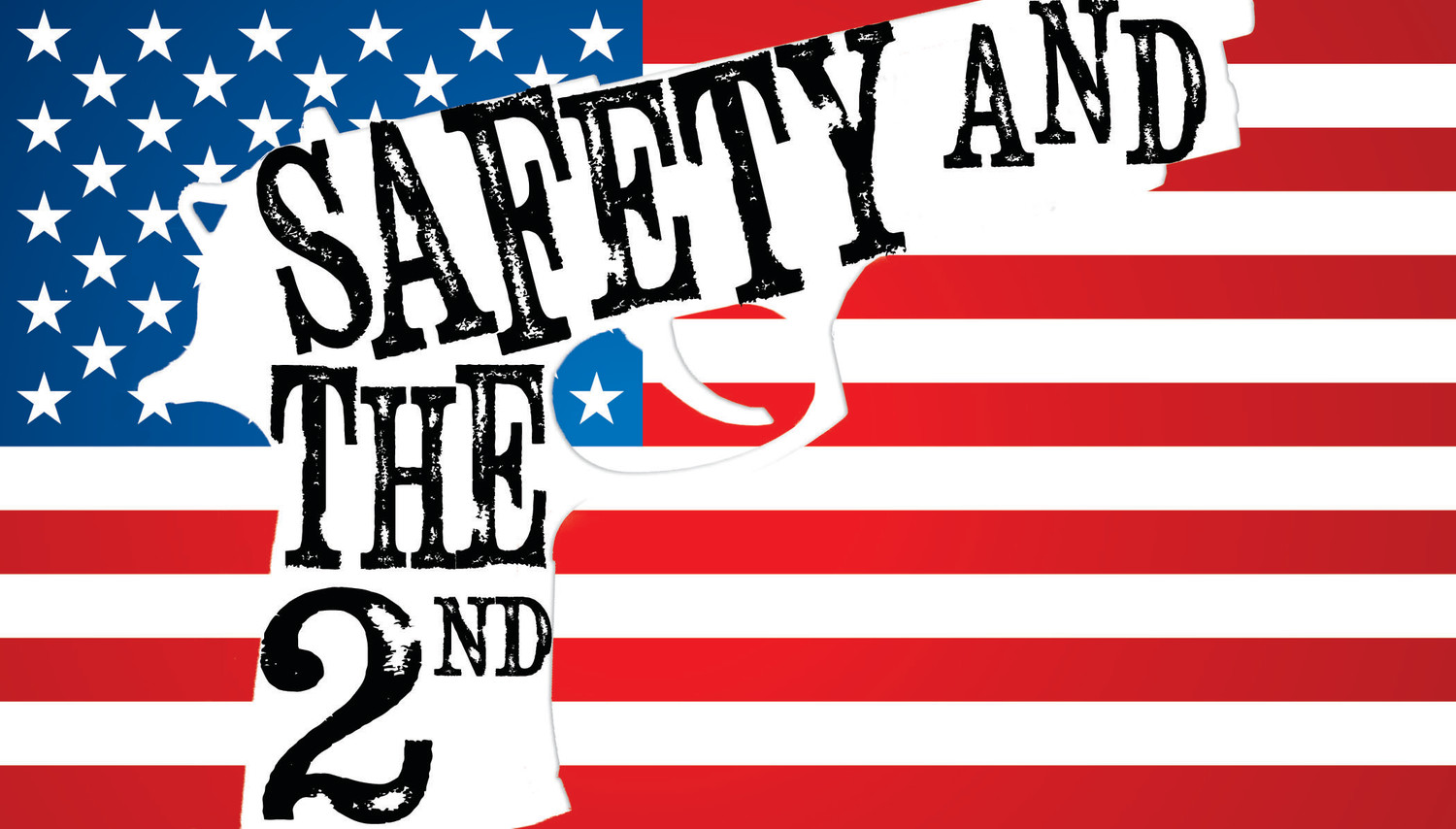Safety and the 2nd
The gun 'wake-up call' hits Nassau
Students step up in a new reality; Herald to look at guns, culture and laws
Posted

Constitution Avenue in Washington was filled with protesters during the national March for Our Lives rally on March 24.
Courtesy Stephan Yost
Part One of a series.
When 13 people were shot dead at Columbine High School in 1999, many of today’s youth, including the survivors of the Feb. 14 mass shooting in Parkland, Fla., had not yet been born. Hayden Gise, a senior at Hewlett High School, recalled the routine lockdown drills conducted when he was in elementary school just a few years later. He said that, at the time, he thought such procedures had always been in place. It wasn’t until 20 children were killed in Newton, Conn., in 2012 that he and his peers got involved in debates over gun laws.
“It seems like mass shootings keep following us throughout our lives,” Gise said. “And we’re really tired of it, and we’ve had enough.”
Jake Schneebaum, a senior at East Meadow High School, said that such awareness has grown in prevalence in part because of the Parkland survivors’ ability to gain traction on social networks like Facebook, Twitter and Instagram. Survivor Emma Gonzalez joined Twitter just days after the shooting as a means to advocate for “common-sense” gun laws and communicate with the Twitter account of the National Rifle Association. Within two weeks, she had a million followers.
“To see someone galvanize a movement around themselves and around their suffering is truly inspiring,” added Kevin Martin, an East Meadow High School Senior.
On March 14, Gise and three of his friends mobilized roughly 900 of their peers who walked out of their classes in solidarity with the national movement dubbed #Enough. The East Meadow students rallied 1,000 of their peers, and across Nassau County, students left their classrooms to commemorate the lives lost and join the dialogue about gun law reform.
“I think that we are gonna make change if we are energized and we demand it,” Gise said, and students across the county shared similar sentiments.
“After seeing what happened at Parkland, it made me realize that these shootings can honestly happen anywhere,” said Selena Fortich, a senior at Glen Head High School, referring to a recent news release by the National Council for Home Safety and Security that named Parkland one of the country’s safest places to live.
“This tragedy serves as a wakeup call,” said Jessica Rosen, a senior at John F. Kennedy High School in Bellmore. “It’s an impetus to start working toward a change. It’s the final straw that told us that we can’t sit idly by anymore.”
Students have indeed resisted the temptation to “sit idly by,” and apparently have ensured that the questions surrounding guns and gun rights will not fade into the background again, as they so often have in the aftermath of mass shootings.
Larry Levy, executive dean at Hofstra University’s National Center for Suburban Studies, said last week that a number of factors in the Parkland tragedy had contributed to a shift in the conversation — and possible legislative changes down the road. Suburban swing voters, who decide national elections, Levy said, “often move to suburbia to raise their kids, and when something happens in their schools that affects not just the education, but the health and safety of their children, they’re going to pay special attention.”
Also, Levy added, “The fact that [the Parkland students] are already, or will soon be, voters, as well as motivated activists, makes them particularly effective spokespeople and organizers — not just of their own numbers, but their parents, grandparents and neighbors.”
“I don’t know if anything will happen … Whether it’s right away, or a longer way down the road, but it definitely could happen for all those reasons,” Levy said.
In the coming months, the Herald will be asking a number of questions — and seeking answers — about guns, gun culture and gun laws in Nassau County and beyond: where the guns are, who owns them and why, and finally, the government’s role in regulating firearms and the future of gun legislation.
Report an inappropriate comment
Comments






